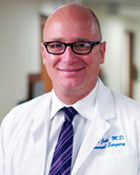GERD Awareness Week Highlights New Treatments for Common Disorder


PITTSBURGH, Pa. (PRWEB) November 13, 2014
Heartburn can be a minor, occasional annoyance precipitated by a big holiday meal. But for some people heartburn is a painful, chronic problem and a symptom of a disease called GERD, gastroesophageal reflux disease.
During the 16th annual GERD Awareness Week, Nov. 23-29, people experiencing symptoms of GERD are encouraged to talk to their physicians and learn more about new and emerging treatments for this common condition.
“There is no reason people need to suffer from the symptoms of GERD, with a variety of treatments available ranging from lifestyle changes to surgery,” said Blair Jobe, MD, Director of the Esophageal and Lung Institute at Allegheny Health Network. “Not only is GERD painful, it is also associated with a variety of complications such as chronic cough, adult-onset asthma, esophageal inflammation and scar formation.”
GERD is caused by a weak lower esophageal sphincter (LES), a valve-like muscle that regulates the passage of food and liquid from the esophagus into the stomach. Gastric juices flowing back into the esophagus can cause severe damage and host of unpleasant symptoms, including heartburn, chest pain, regurgitation, sore throat, and chronic cough.
It is estimated that 25-40% of American adults experience symptomatic GERD each month, and 10-20% suffer from it daily.
At one time, Jodi Lech of Washington County experienced the painful symptoms of GERD almost every day. As the Director of Oncology Pharmacy Services for Allegheny Health Network Cancer Institute, Jodi knew that over-the-counter and prescription medication offered only temporary relief. Dr. Jobe told her about the LINX Management System, a new minimally invasive treatment that studies have shown can greatly reduce the symptoms and associated risks of GERD. LINX is the first non-medical surgical therapy to be approved for GERD by the Food and Drug Administration in more than three decades.
The LINX system prevents reflux by reinforcing the faulty lower esophageal sphincter, Dr. Jobe explained. A small, flexible band of magnets enclosed in titanium beads is placed around the base of the esophagus, mimicking a natural barrier to reflux. The magnetic bond expands to allow foods and liquids to pass through, then closes after swallowing, preventing gastric juices from refluxing back into the esophagus.
The LINX procedure is performed laparoscopically on an outpatient basis, under general anesthesia. Recovery usually lasts about a week, and patients can resume a normal diet shortly afterwards.
According to a study published in the New England Journal of Medicine, of 100 people with GERD who underwent the LINX procedure, 92% achieved significant symptom improvement, 91% achieved freedom from daily medication, 100% eliminated severe regurgitation, and 94% were satisfied with their overall condition.
“Before the LINX procedure, I struggled with reflux and heartburn nearly every day,” Jodi said. “Since the procedure I have not had one incident of heartburn, no matter what I eat or how much stress I am experiencing. It’s been a huge relief not to have to take daily medication.”
Jodi had such a good experience that her father, Ron Petrie, who had also struggled with heartburn, decided to have the LINX procedure himself, also with a good result.
Good candidates for the LINX procedure are those diagnosed with GERD through pH testing and those who are either dependent on medical therapy or no longer being helped by medical therapy.
For more information on LINX and Dr. Jobe, call 844.412.GERD.